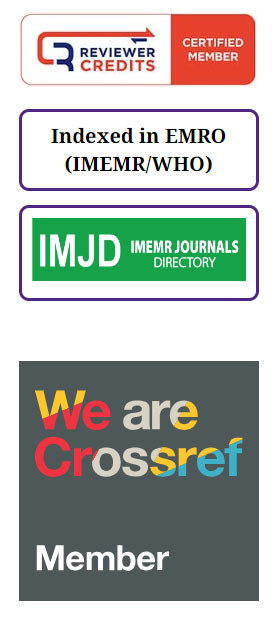Association Of Sociodemographic and Breast Feeding Variables In Normal Weight and Over Weight Lactating Mothers
DOI:
https://doi.org/10.59119/10.59119/ajms.2023(3).1.2Keywords:
Keywords: BMI, lactation, lactogenesis, obesity, overweight, ProlactinAbstract
Background: The prevalence of obesity is increasing worldwide. Along with other ill health effects, high body mass index (BMI) may interfere with breast feeding practices in lactating mothers.
Objectives: This study was designed to find an association between maternal BMI and milk hormone prolactin along with other risk factors for breastfeeding outcome.
Methodology: This cross-sectional analytic study included 88 lactating mothers in different BMI categories using non-probability purposive sampling technique. Data included various sociodemographic and breastfeeding variables along with fasting blood for serum prolactin levels. Analysis was done by SPSS v.20. p<0.05 was considered as significant.
Results: An increase in operative deliveries, decreased Prolactin levels, decreased duration of lactation was observed in high BMI group. A significant negative correlation was found between serum Prolactin and high BMI group. Socioeconomic status, time duration of one breast feed and number of breast feeds/day were not different among the two groups.
Conclusion: High maternal BMI is a risk factor for high cesarean births, decreased duration of breastfeeding, low rates of exclusive breastfeeding and decreased serum Prolactin levels.
Downloads
Downloads
Published
Issue
Section
License
Copyright (c) 2024 Avicenna Journal of Medical Sciences

This work is licensed under a Creative Commons Attribution-NonCommercial 4.0 International License.






